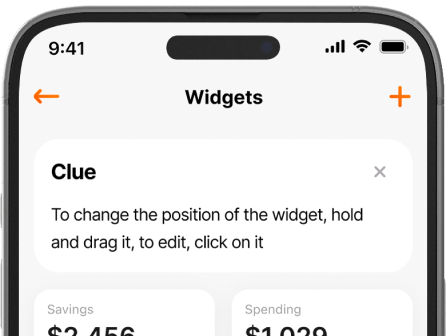Could you cover a $1,000 expense in cash right now, without credit, loans, or cutting back on something else? If so, you’re in the minority—only 41% of Americans, according to Bankrate’s 2020 data, would be able to pay that $1,000 from savings. The COVID-19 pandemic only underscored the necessity of having some backup funds, as long-term unemployment and underemployment are all-too-real possibilities.
If you can’t pay from savings, though, what do you do? Credit cards and loans have high interest rates that will only end with you getting deeper into debt. Borrowing from friends or family is cheaper, but not reliable or necessarily pleasant, and there’s only so much you can cut from your monthly spending.
That’s why you need a dedicated emergency fund to turn to when you find yourself between jobs or in need of an expensive repair! Most experts suggest saving up to 3-6 months of living costs so that, in theory, you could go without work for that long without undue financial stress. But what’s the right number for you, and how can you get started on building and maintaining a source of ready cash?
How Big Should Your Emergency Fund Be?
Everyone has different financial needs, so the best way to measure an emergency fund is in terms of your monthly expenses. If you don’t know what those are, you should figure that out first! At minimum, you should know how much you pay for rent, utilities, food, transportation, insurance, and loan payments each month.
You should then decide if you want to calculate your emergency fund in minimum monthly expenses or actual monthly expenses. If you go with the minimum, you’ll need to figure out the least you can survive on. The most basic food, canceling all your unnecessary subscriptions, cutting down on utilities, etc.
Thinking in terms of your actual expenses is probably a better idea, though. Dealing with a financial shock is stressful enough without having to cut all your spending down to a subsistence level—and when it comes down to it, we often don’t have the mental strength to let go of the lifestyle we’re used to.
Regardless of which one you go with, you should remember to adjust the amount in your fund as your expenses change! You can expect your monthly expenses to rise every year due to inflation, but they can also be affected if you add members to your family, move to a more expensive area, or do other things that can lead to variation in your cost of living.

Once you’ve figured out your monthly expenses, here’s the general breakdown of how much you should have:
| Starting Minimum | $1,000 |
| Next Step | 1 month’s expenses |
| Ideal Range | 3-6 months’ expenses |
| Maximum Range | 8-12 months’ expenses |
Starting Minimum: $1,000
The “absolute minimum” is somewhat arbitrary, but $1,000 can go a long way towards paying deductibles, making repairs, paying rent, etc. It’s a number you can probably achieve within a few months of saving, so it’s a good base to aim for!
Next Step: 1 Month’s Expenses
Saving up a whole month of expenses can take some time! Assuming that 80% of your salary goes to expenses every month, it’ll take you four months of putting all 20% of your savings towards your emergency fund to equal one month of expenses. If you can only save 10% per month, it’ll take you nine months to save up one month of expenses!
For example, let’s say you make $4,000 a month. You figure that you can spend 90% ($3600) and save 10% ($400). At that rate, it’ll take you nine months to save $3,600.
That’s why starting with a target of one month is a good idea. If you can’t save much, it could take you over two years to hit the three-month mark, which might feel discouraging after a while. One of the keys to effective saving is having achievable goals, so starting small and building from there can help keep you on track.
Ideal Range: 3-6 Months’ Expenses
Having a few thousand dollars socked away will help you absorb bigger one-time expenses, but what if you find yourself out of work? As of September 2021, the Bureau of Labor Statistics reported that the median time it takes to find a new job is 13.3 weeks. That’s a little over three months, so if you think you’re about as employable as the median American, 3-6 months is a safe amount to save!
Maximum Range: 8-12 Months’ Expenses
According to the same BLS data as above, though, 34.5% of job-seekers took over 27 weeks to find a new job! If that includes you, it could mean being out of work for seven months or more. Factors that could contribute to a longer job search include:
- Industry – demand and hiring time can vary
- Location – job markets can be quite different
- Experience – Lack of experience can be an issue
- Education/skills – Underqualification and overqualification can both be problems!
- Position – If you’re applying for high-level positions, your search will be slower
- Age – employers often prefer candidates under 40
What is the Maximum I Should Save?
Regardless of how long your search might take, keeping more than 8-12 months of money in a savings account probably isn’t a good idea. While they’re stable and easy to access, the interest rates on these types of accounts probably won’t be enough to keep up with inflation.
The rest of your savings, therefore, would likely do better by being invested in assets with higher returns, like stocks and bonds. If you still find yourself in need of money after your emergency fund is exhausted, you’ll have had enough time to liquidate some other assets and hopefully avoid losses.
How Should You Save for an Emergency Fund?
The biggest rule to remember is that your emergency fund should be separate from the rest of your money. Ideally, you’ll create a new account and designate it as your emergency money, not to be touched unless you really need it. Make a habit of putting money in but not taking it out unless a qualifying emergency appears (we’ll discuss what counts as an emergency later!).
Speaking of putting money in, you’ll need to make a habit of contributing to your emergency fund. Setting up automatic transfers into your new account is a good idea. Perhaps shortly after you get paid or after your bills are covered for the month, you should be sure to divert whatever percentage of your income you can spare.
Emergency Fund vs Other Goals
Here’s the general rule: if it can wait, stop saving for it and put the money in your emergency fund instead. Some goals can’t wait—if you need car repairs, books for school, etc., those take priority. However, less immediately necessary goals, like retirement savings, investing, buying a home, and even paying off debts, should be put mostly on hold.
That’s right—even if you have debt, you should focus on building a small emergency fund (at least $1,000 or so), since it can help protect you from falling even deeper into debt due to lack of available funds.
One exception to this is when your debt is costing you a lot in interest. Credit card debt, for example, can charge upwards of 20% per year, and getting out of that debt should be a top priority. In these cases, you’ll want to focus on paying off the debt while also building an emergency fund. Exactly how you split your debt payments and fund contributions will differ depending on your financial situation, but it’s important to have at least a small cushion against future shocks while you finish paying off that high-interest debt!
When to Use Your Emergency Fund
An emergency is something that endangers you or your family’s:
- Life
- Health
- Financial future
“Emergency expenses” in these categories can include medical procedures, rent, utilities, food, car repairs, fixing your home, keeping up with loan payments, and other things that you need in order to survive, stay healthy, and keep your finances from spiraling downwards. If you really need it and you don’t have enough money to cover it, that’s an emergency fund situation.
When you withdraw money, don’t forget that you’ll have to put it back at some point—and saving tends to take significantly longer than spending. Don’t touch your emergency fund unless it’s a real need!
Start Your Emergency Fund Today

If you’ve skipped to the end hoping for a quick-start guide, here it is! You can get an emergency fund up and running in a few minutes by following a few simple steps.
- Open a savings or money market account, or designate an existing account as your emergency fund account
- Figure out what your monthly expenses are—a ballpark estimate including your rent, food, utilities, transportation, insurance, and loan payments is fine. If you make $4,000/month and generally find that you have $600 left over, for example, you can probably estimate that your expenses are around $3,400/month.
- Figure out how much you can put in your emergency fund every month. If you’re currently contributing to savings or paying off loans, look into diverting at least some of that money towards your fund. If this sounds like too much work right now, make a ballpark estimate based on the amount of money you can spare each month and revisit it when you can!
- Set up a regular automatic transfer from your checking account to your emergency fund. Monthly may be a good idea, though you can also make smaller weekly or bi-weekly transfers if that fits better with your income and budget.
And there you have it! An emergency fund in the making. Your first target can be smaller—one to two thousand dollars—and, as you monitor your progress, you can build towards meeting your monthly expenses. Finmatex app will help you stay on the track since you get all your financial information in one place. Start your 1-week free trial today with iOS or Android app and let your financial security grow!








